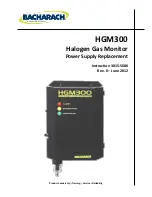
18
19
TEKNETICS
Comprehensive Operating Manual & Guide to Metal Detecting
TEKNETICS
Comprehensive Operating Manual & Guide to Metal Detecting
LCD VISUAL DISPLAY
In normal operation, when the searchcoil passes over a metal object, the electrical signature
(2-digit I.D.) of the metal object is displayed on the numeric display for 4 seconds, unless
superceded by another object sooner. On a given buried object, the number will bounce
around if the signal is weak or if the amount of ground mineralization is high.
At the top of the display, an arrow indicates the classification of the object.
NUMERIC TARGET I.D. (2-digits)
The following table shows the numbers typically associated with certain commonly
encountered nonferrous metal objects. Older silver U.S. coins usually read about the same as
their modern clad equivalents. Modern quarter-sized dollar coins like the Susan B. Anthony
and the Sacagawea read about the same as a quarter. Many Canadian coins are minted from
a magnetic nickel alloy which gives very inconsistent readings and may register as iron. Most
one-ounce silver bullion coins will fall into the same range as the modern U.S. $1 Eagle.
OBJECT
TARGET I.D.
foil from gum wrapper
40 - 55
U.S. nickel (5¢ coin)
typically 58
aluminum pull-tab
60 - 75
aluminum screwcap
70 - 80
zinc penny (dated after 1982)
typically 78
aluminum soda pop can
75 - 85
copper penny, clad dime
typically 83
U.S. quarter (25¢ coin), clad
typically 89
50¢ coin, modern clad
typically 92
old silver dollar coin
typically 94
US silver Eagle $1 coin
typically 95
PROBABLE TARGET I.D.
The probable target ID zones at the top of the LCD display represent the signal ranges
produced by various coins and types of metal objects. When a metal target is detected, the
microcomputer analyzes the signal and categorizes it based on what kinds of metal objects
usually produce that kind of signal. The microprocessor then displays an arrow along the top
of the LCD screen above the icon which represents that category.
For instance, if the detected signal fits within the parameters usually exhibited by zinc pennies
and the electrically similar aluminum screwcaps, the microcomputer will categorize the signal
as “zinc penny/aluminum screwcap”. The LCD screen will then illuminate the arrow above the
zinc/screwcap icon.
Copper pennies (pre-1982) will usually register in the 10¢ zone.
Most gold jewelry is small, and will tend to read in the 40-60 range. Silver jewelry usually has
more metal in it and therefore tends to produce higher readings.
Since different metal objects can produce similar signals, and since minerals in the soil can
distort the signals, the probable target ID’s are just that — probable. There is no way of
knowing for sure what’s buried other than to dig it up. Experienced metal detector users have
a rule of thumb — “when in doubt, dig”.
STRONG MEDIUM WEAK
PinPoint Feature
After a buried target has been located using the All Metal or Discrimination modes, you want
to pinpoint the exact location of the target in order to facilitate its recovery. Accurate target
pinpointing will minimize digging.
Activate the PinPoint feature by pulling the trigger switch located under the housing, in front of
the grip. Unlike the All Metal and Discrimination modes, PinPoint does not require motion to
detect metal. PinPoint will detect objects while the coil is in motion and will continue to detect
metal if searchcoil motion stops over the target.
Ground Pick-Up
If you have not performed the ground cancellation procedure, the PinPoint feature usually
causes the ground to sound off. This means that while pulling the pinpoint trigger, the audio
tone will get louder as you lower the searchcoil to the ground; this is called ground pick-up.
Since you want to hear the target, rather than the ground, we recommend first ground
canceling in order to eliminate ground pick-up. Alternatively, if you experience ground pick-up,
you may place the coil very close to the ground, off to the side of the target; then pull the
trigger, and raise the searchcoil slightly while passing it over the target.
How to Pinpoint
Position the searchcoil just barely off the ground, and to the side of the target. Then pull the
trigger, and raise the searchcoil about 2 inches. Lifting the searchcoil away from the ground
causes the ground signal to go negative; the machine becomes silent. Now move the
searchcoil slowly across the target, and the sound will communicate the target’s location. As
you sweep from side to side, and hear no sound at the ends of the sweep, the target is
located in the middle of that zone, where the sound is loudest and the audio pitch is highest. If
the sound is loud over a wide area, the buried object is large. Use the PinPoint feature to trace
an outline of such large objects.
Narrow It Down
To further narrow the field of detection, position the searchcoil near the center of the
response pattern (but not at the exact center), release the trigger, and then pull it again.
Now you will only hear a response when the searchcoil is right over the top of the target.
Repeat this procedure to narrow the zone even further. Each time you repeat the
procedure, the field of detection will narrow further.
Controlling Sensitivity in PinPoint mode
The default sensitivity setting in PinPoint is 60. If you wish to change the PinPoint sensitivity
setting:
Pull the trigger to engage PinPoint. Do not release the trigger.
Rotate the SETTINGS knob to change the sensitivity.
Rotate counterclockwise to decrease sensitivity; clockwise to increase.
Adjustment to PinPoint sensitivity will not affect sensitivity of the All Metal or Discrimination
modes. Likewise, sensitivity changes in the other modes will not affect Pinpoint. Changes to
pinpoint sensitivity will be saved after the trigger is released. When the T
2
is powered off, the
device will revert to the default setting.
TekneticsMANUAL.qx6 4/2/07 11:02 AM Page 18
















































